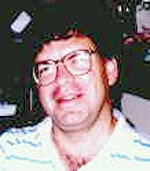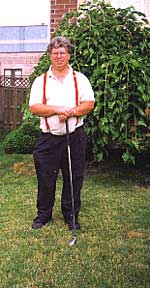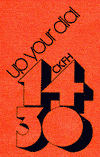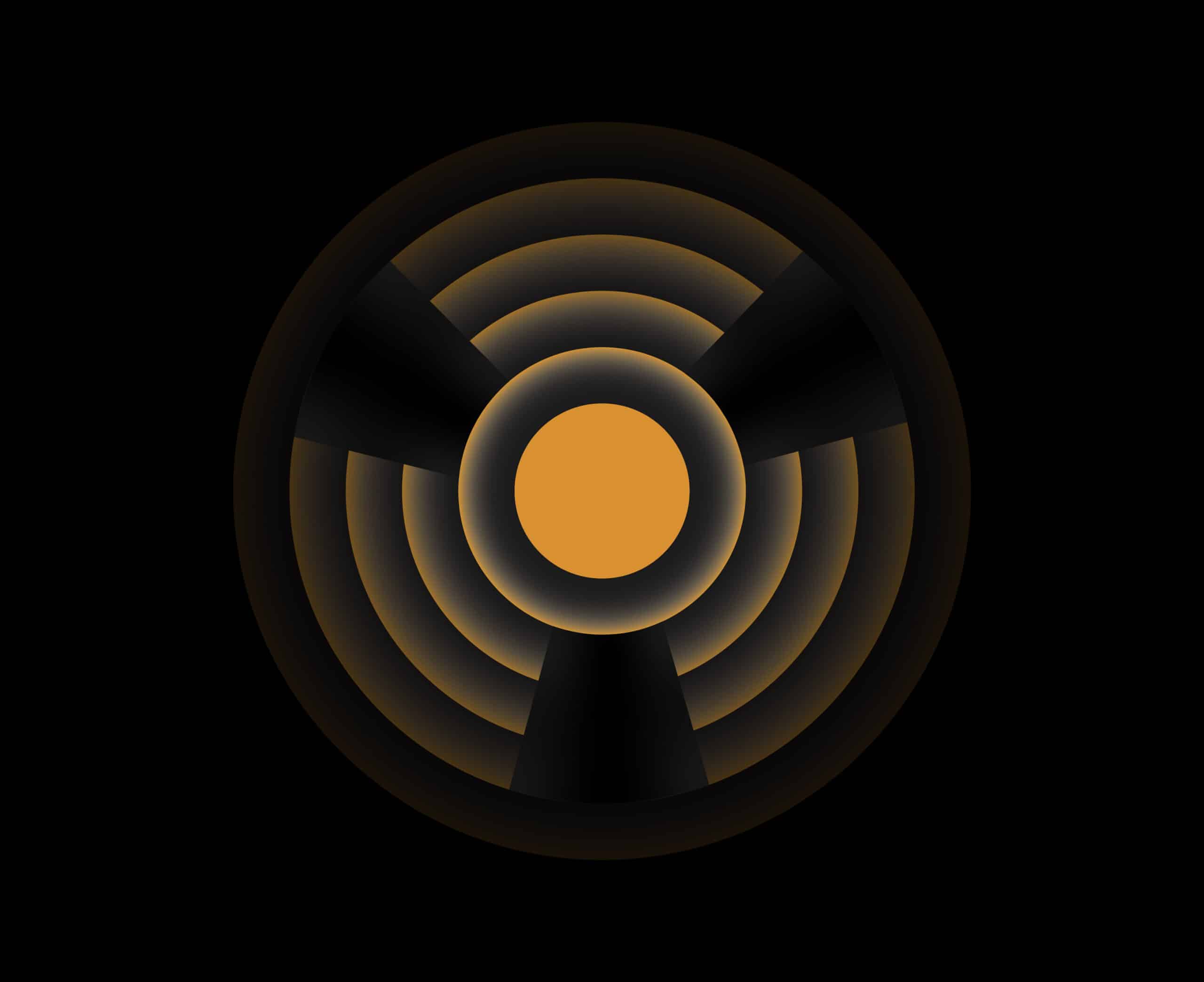The Dale R. Patterson Collection

Dale Patterson
|
Dale Patterson remembers the time and place when he was turned on to Top 40 radio. It was April, 1966 and a friend of his asked if he had ever listened to CHUM (Toronto). "No," he said. His parents listened to CFRB (full service MOR) in the house and it never occured to him to check out other stations.
Dale says, "I was a TV addict then, but one listen to CHUM and I was hooked ... the music, the personalities, the jingles .. I never went back to TV again. To this day there are many 'classic' television shows I've never seen." After a few months of listening to nothing but CHUM, Dale began branching out to other stations, like WKBW and WYSL Buffalo, WABC New York and the newly-converted Toronto rocker CKFH. In 1975, Dale entered the broadcasting field as an editor/reporter for the Canadian news agency Broadcast News. (He still works there on the print side at The Canadian Press.) Dale says,
|
He called himself the “Tall One”. But for many listeners to CFPL in London, Ontario during the 1960s, Dick Williams was the only one when it came to Top 40 radio. Williams could have worked in almost any major market he choose, after all, he did a stint in mornings at KDEO in San Diego in the early 1960s. But he fell in love with the medium market of London, Ont., after arriving there after his San Diego stint. He’s still there.
In the mid-1960s, many station owners still had their doubts about this new-fangled rock’n’ roll. Even after 10 years, was it really going to last? And what about our adult listeners? So many stations, especially those serving medium markets, reached a compromise: daytime programming would he reserved for middle of the road programming, with plenty of Percy Faith, Johnny Mathis and the Living Strings. Rock ‘n’ roll would be reserved for the evenings. That’s when the kids were listening, weren’t they? And who ever heard of an adult listening to rock ‘n’ roll?
It was at such a station Dick Williams worked in the 1960’s. His clever, fast-paced, humor-driven show became stuff of legend for CFPL’s southwestern Ontario listeners, and one listen to this tape will show why. One can only assume that Williams had plenty of offers to work in a larger market with higher compensation, but he spurned them all to work in the charming, friendly city of London, Ont. Thousands of listeners there thank him still!
This aircheck is one of my all-time personal favorites. The tape has been digitally enhanced, thanks to the superb work of Charlie Ritenburg of Richmond Hill, Ont. And even though on the tape Dick says it’s January 7, 1964, it really is 1965!


They called themselves number-two radio. But in the hearts of many Toronto radio listeners in the late ’60s and early ’70s CKFH was number-one.
For years, starting in 1957, CHUM radio was the dominant Top 40 powerhouse in Toronto radio. Sure CKEY gave them a good run in the early ’60s, but they were gone – an MOR station – by 1965. But by 1967, another challenger had appeared, the quirky, unpredictable CKFH. They played the songs CHUM didn’t play: British hits, album cuts, rhythm and blues. Their deejay lineup ranged from the offbeat Big G. Walters to the master of the Top 40 format in Toronto – Dan O’Neil. And with all due respect to the legendary CHUM, it was the anti-CHUM.
One of the early on-air personalities at ‘FH was English-born Keith Hampshire, who came to the station in 1968 after a stint at Radio Caroline. He was let go, on his birthday, in 1969, and has gone on to a successful career as one of Canada’s top commercial voice talents.
(NOTE: The date of this aircheck is in some dispute. Hampshire says he left the station in November, 1969 yet the vintage of these songs seems to be January 1970. You be the judge.)
It was one of America’s original radio stations. It was also one of America’s most original radio stations.
WGR went on the air in 1922, one of the first radio stations in the United States. After 50 years as a full service station broadcasting everything from radio dramas to homemaker shows, WGR became a full-time contemporary music station in 1972, with a generous dash of oldies and a leaning toward middle of the road music. They played Abba, ZZ Top and everything in between. It was an interesting mix that reflected the programming genius of long-time PD Larry Andersen.
Some of Buffalo’s most legendary personalities worked at WGR during its heyday as a contemporary music station from 1972 to 1989. Stan Roberts, George Hamberger and Tom Shannon all did stints in morning drive, with Andersen, Joe Galusky and Craig Matthews appearing in middays during that period. The witty Frank Benny did afternoon drive during much of WGR’s Top 40 era, and the outspoken Shane (a.k.a. Ron Gibson) was the station’s early evening dee-jay of record during the golden years. Veteran talk show host John Otto was a late-evening mainstay as was Tom Donahue. A variety of hosts – including Hank Nevins and Jim Scott handled overnight duties. Weekenders included Jerry Reo and the late Mike Rohzman.
One of WGR’s most remembered personalities never held a Monday-Friday shift there. Jerry Farrell had a full-time job at the Niagara Falls Power Authority during the week and only had time for weekend broadcast week. But he made the most of it during his years at WKBW and WGR.
About a year after this tape was made, Farrell died of a heart attack at age 46. Here he is on April 11, 1976 in a classic aircheck from WGR, “Great Radio.”
At the beginning of this last-known version of the syndicated “History of Rock and Roll Time Sweep”, you’ll hear narrator Bill Drake offer the above comment concerning “considerable carryover”, just before the “magic, music and memories” begin. If not offered as an apology for presenting Top 40 Radio as “Rock & Roll”, it’s certainly a partial explanation of a musical montage that was never exclusively “Rock & Roll”.
Mr. Drake offers no such explanation for the 1960’s, when that pesky “pop carryover” Frank Sinatra had a number one hit while British groups dominated rock music, or the 1970’s, when Barry Manilow and John Denver are categorized not as “pop carryover”, but “mellow rock” artists. Even the final segment of this Time Sweep (from 1981) includes “many non-rock artists continuing to do well” (like Eddie Rabbit, Kenny Rogers and Barbra Streisand). Were these also “carryovers?”
Top 40 radio was NOT “Rock & Roll” radio. Some rock music was presented in a “variety” format known as Top 40  and that may have helped it become the dominant form of American popular music. This Time Sweep should really be titled “The History of Number One Records on Top 40 Radio” from 1956 – 1981.
Since then, diversification of formats, new and specialized outlets for recorded music, and the mass-marketing of highly-polarized musical forms (ie: suburbanites identifying with urban cowboys and inner-city hoodlums) has all but eliminated what was once the most loved and popular musical format on the radio. Top 40 was special because it was NOT just Rock ‘n’ Roll. It was NEVER just one type of popular contemporary music.
While the final “History of Rock & Roll” may never be written, the History of Top 40 Radio is “in the books.” It’s all done, if not forgotten.







